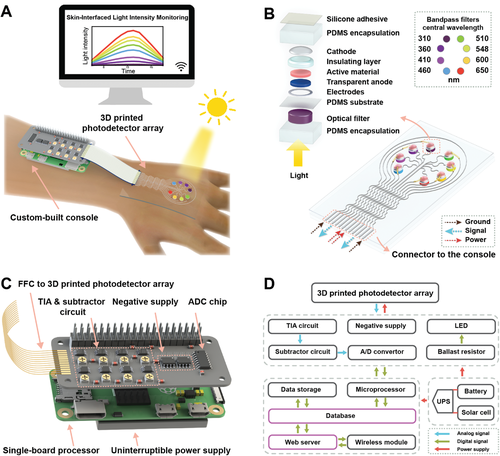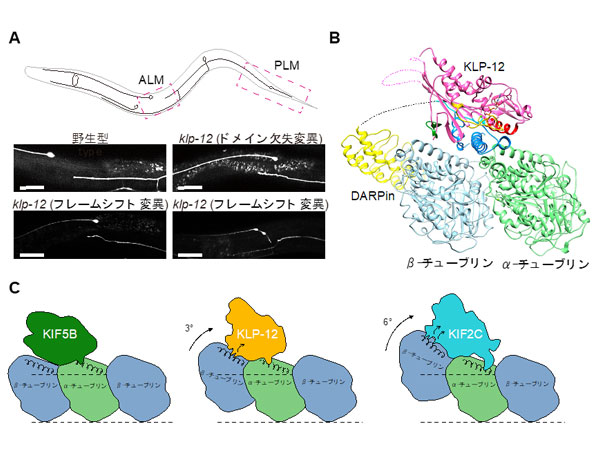より個別化された治療を可能にするリアルタイムデータを提供するデバイス Device provides real-time data for more personalized treatment
2022-09-08 ミネソタ大学
皮膚に貼ることができる柔軟な紫外線可視光線検出器を備えた、世界初の完全3Dプリントデバイスを開発しました。この装置は、特注の携帯用コンソールと統合され、光の照射と症状の相関を継続的に監視しする。
3Dプリントされた装置は、生体適合性のあるシリコンのベースにプリントされた複数の材料の層で構成されています。層には、電極と光学フィルターが含まれている。フィルターは、評価すべき光の波長に応じて交換することができる。また、研究チームは、酸化亜鉛を使って紫外線を集め、電気信号に変換している。この装置を皮膚に装着し、特注のコンソールを取り付けて、データを取り込み保存する。
<関連情報>
- https://cse.umn.edu/college/news/unique-light-sensing-3d-printed-device-could-help-people-lupus
- https://onlinelibrary.wiley.com/doi/10.1002/advs.202201275
3Dプリンターで作る肌と一体化した紫外-可視ハイブリッド光検出器 3D Printed Skin-Interfaced UV-Visible Hybrid Photodetectors
Xia Ouyang,Ruitao Su,Daniel Wai Hou Ng,Guebum Han,David R. Pearson,Michael C. McAlpine
Advanced Science Published: 11 July 2022
DOI:https://doi.org/10.1002/advs.202201275

Abstract
Photodetectors that are intimately interfaced with human skin and measure real-time optical irradiance are appealing in the medical profiling of photosensitive diseases. Developing compliant devices for this purpose requires the fabrication of photodetectors with ultraviolet (UV)-enhanced broadband photoresponse and high mechanical flexibility, to ensure precise irradiance measurements across the spectral band critical to dermatological health when directly applied onto curved skin surfaces. Here, a fully 3D printed flexible UV-visible photodetector array is reported that incorporates a hybrid organic-inorganic material system and is integrated with a custom-built portable console to continuously monitor broadband irradiance in-situ. The active materials are formulated by doping polymeric photoactive materials with zinc oxide nanoparticles in order to improve the UV photoresponse and trigger a photomultiplication (PM) effect. The ability of a stand-alone skin-interfaced light intensity monitoring system to detect natural irradiance within the wavelength range of 310–650 nm for nearly 24 h is demonstrated.


